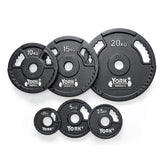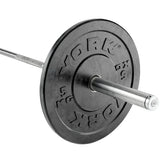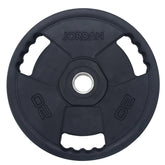Power Rack vs Squat Rack: Which is best?

Whether it's Shakespeare's famous "to be or not to be?" line or Neo's deciding between the red pill and the blue pill, the world is full or dilemmas and choices. The world of fitness is no different, and one of the most popular decisions is between the Power Rack or the Squat Rack.
Both the power rack and squat rack are staples in commercial and home gyms. They're great for a variety of weight training exercises, not just squats. Understanding their features, benefits and limitations is crucial for tailoring your home gym to your workout needs.
Below we take look at the main differences between the squat rack and power rack and their pros and cons, so you can decide which one best suits you.
Check out our top range power racks and squat racks here.
What is a Squat Rack?

A squat rack, often referred to as squat stands, is a piece of strength equipment designed primarily to support weight during squats. Its structure usually includes two upright beams that allow for the barbell to be racked at a convenient height for easy lifting. This equipment is essential for progressing in squats by allowing you to add incremental weight.
Key Features
Squat racks are known for their sturdy and stable platform, which can accommodate a variety of exercises such as squats, bench presses, and overhead presses. Many models include safety features like adjustable safety bars or spotters that catch the barbell if a lift is failed, enhancing the safety of your workouts . Some squat racks come with pull-up bars and plate storage, adding to their utility and space efficiency.
Squat Rack: Pros and Cons

Pros
- Can do a range of exercises, not just squats. Movements like bench press and over head press.
- Take up less floor space making them suitable for home gyms with limited room.
Cons
- Although many have safety features like safety bars, they require careful handling as some models can be prone to tipping if not used correctly, especially with heavy weights.
- Some may lack the full range of accessories and configurations available with more comprehensive setups like power racks, potentially limiting the exercises you can perform.
What is a Power Rack?

A power rack, also known as a power cage or squat cage, is a robust frame designed for free weight barbell exercises. This equipment provides a mechanical spotter through its structure of four upright posts and adjustable horizontal bar. This design supports heavy lifts without the movement restrictions found in equipment like the Smith machine.
Key Features
Power racks are equipped with several features that enhance safety and versatility. They include adjustable J-Hooks and safety bars to support heavy weights and allow for a variety of exercises like squats, bench presses, and deadlifts. Many models also come with attachments such as pull-up bars, dip stations, and cable pulleys, expanding the range of possible exercises.
Power Racks: Pros and Cons

Pros
- Safety features - many come with safety bars and spotters arms which provide security during solo workouts by catching the barbell if you fail a lift.
- Versatile - They can support over 30 different exercises, which can be further expanded with various attachments.
Cons
- Requires more space due to their size, which may not be ideal for smaller home gyms.
- Pricier than simpler setups like squat racks, but the investment can be justified by their durability and the comprehensive workout options they provide.
Squat Rack vs. Power Rack: Key Differences

Space Requirements
- Squat racks - more compact, making them an ideal choice for home gyms with limited space. They can be easily positioned in a corner or against a wall, maximising your workout area without consuming much floor space.
- Power racks - require a significant amount of space due to their larger footprint and the need for high ceilings to accommodate various exercises and attachments.
Safety Features
- Squat racks - offer basic safety features like spotter arms, they are generally less equipped compared to power racks. The inherent design of squat racks makes them prone to tipping, especially when loaded with heavy weights, which poses a safety risk.
- Power racks - designed with your safety in mind, featuring robust safety bars, pins, and straps that ensure a secure environment for performing heavy lifts, even when you're training alone.

Versatility and Customisation
- Power Racks - Can perform a wide range of exercises including squats, bench presses, pull-ups, dips and more. They are often equipped with options for customisation through various attachments, enhancing the scope of exercises you can perform.
- Squat Racks - Best for basic exercises like squats and overhead presses. Have limited functionality and customisation options, making them less adaptable than power racks.
Which is Better for You?
Budget Considerations
When choosing between a power rack and a squat rack, your budget plays a crucial role. Power racks tend to be more expensive due to their added features and versatility, allowing for a wider range of exercises. If you're on a tight budget, a squat rack may be a more cost-effective option, as it generally costs less and still supports essential exercises like squats and bench presses.
Space Availability
The amount of available space you have can greatly influence your decision. Power racks require more space due to their larger size and the need for clearance around them for safe use and additional attachments. If your workout area is limited, a squat rack might be more suitable, as it occupies less space and can fit more easily into smaller areas.
Fitness Goals
Consider what you aim to achieve with your home gym setup. If your focus is on heavy lifting and you require safety features for solo workouts, a power rack is advantageous due to its robust design and security features. For those primarily interested in basic lifting exercises like squats and overhead presses, a squat rack may suffice, especially if space and budget are constrained.
Final Thoughts
As you move forward, whether it's the power rack or squat rack let your chosen equipment be a stepping stone towards achieving your health and fitness aspirations, encouraging further research or adjustments as your workout needs evolve.
FAQs
1. Which is preferable for a home gym, a power rack or a squat rack?
A power rack is generally considered superior due to its versatility, supporting a broader array of exercises compared to a squat rack. It provides more support, can handle greater weights, and accommodates various attachments that enhance its stability, security, and utility.
2. Can a power rack serve as a comprehensive solution for a home gym?
Yes, a power rack is an excellent choice for those with sufficient budget and space, as it offers extensive versatility. For smaller spaces, alternatives like squat stands or wall-mounted racks can also be effective.
3. Should you consider installing a squat rack in your home gym?
Absolutely, a squat rack can be an essential component of a home gym. It not only aids in improving your squat technique but also supports other key exercises like bench presses and deadlifts. Its versatility makes it a central piece of equipment in many home gyms.
4. Are power racks safer to use than other gym equipment?
Power racks are designed with numerous safety features, including spotter arms, pin safeties, and safety straps. These features help to catch the bar if you fail a lift, significantly reducing the risk of injury and eliminating the need for a physical spotter.










